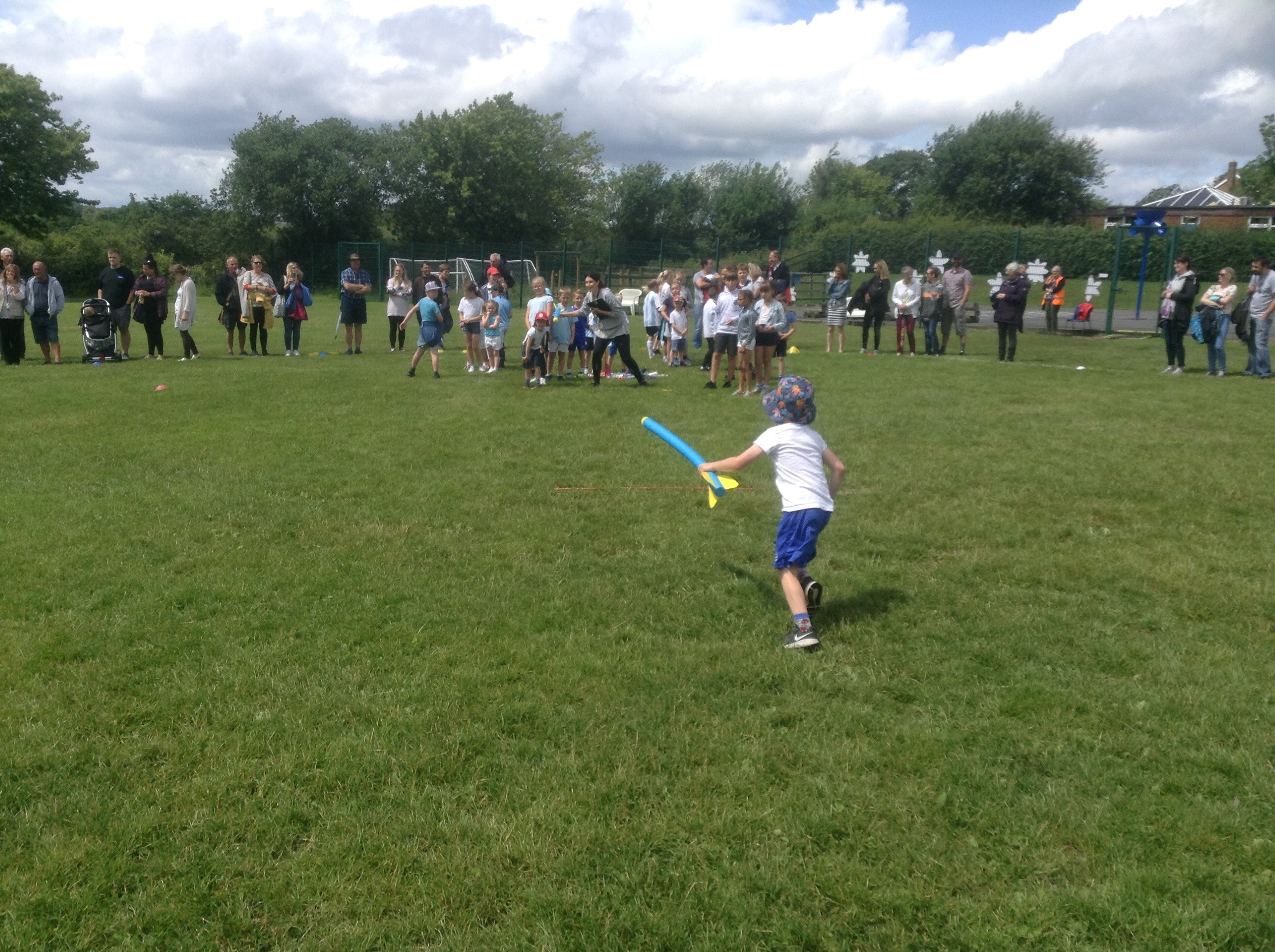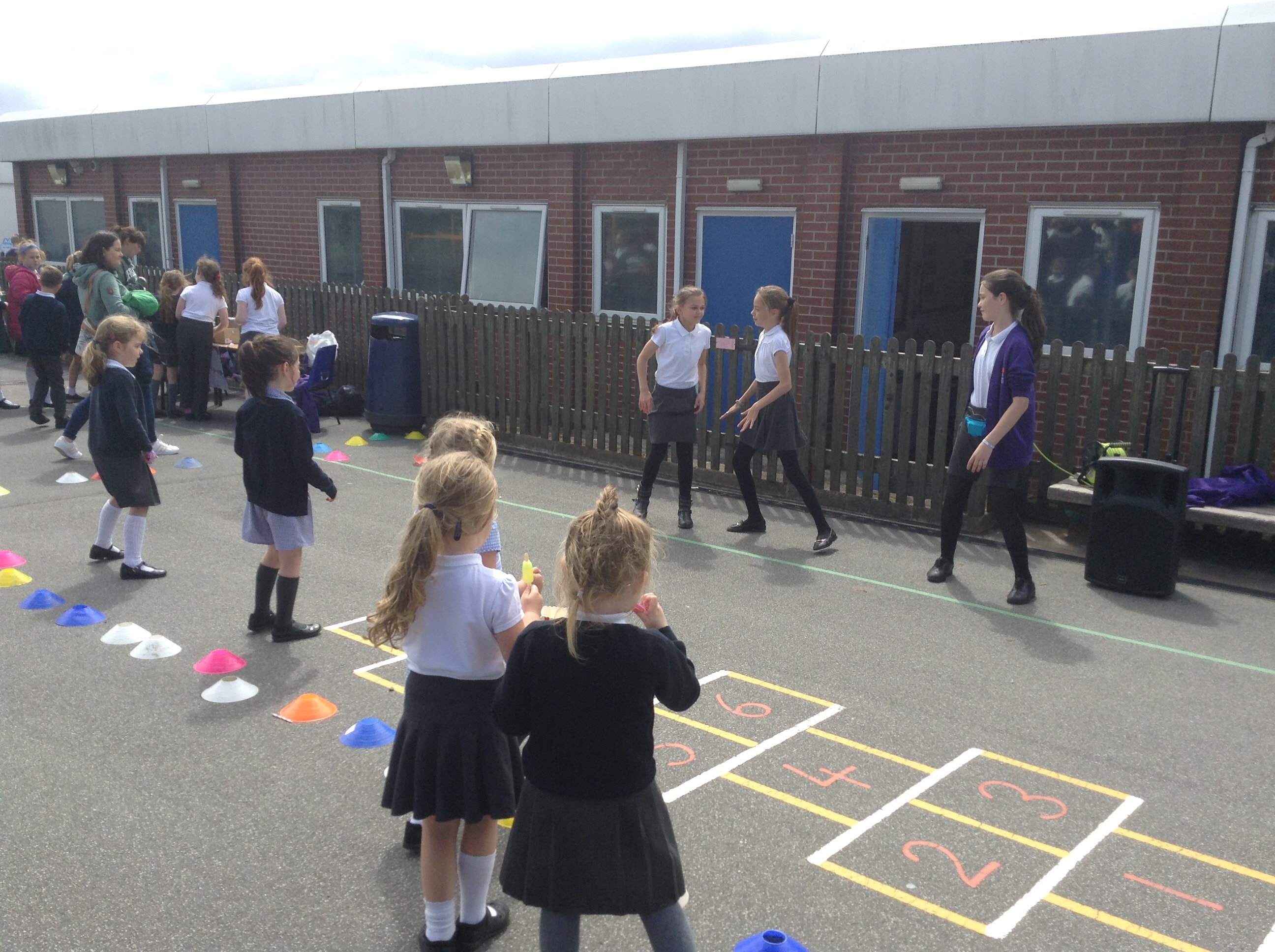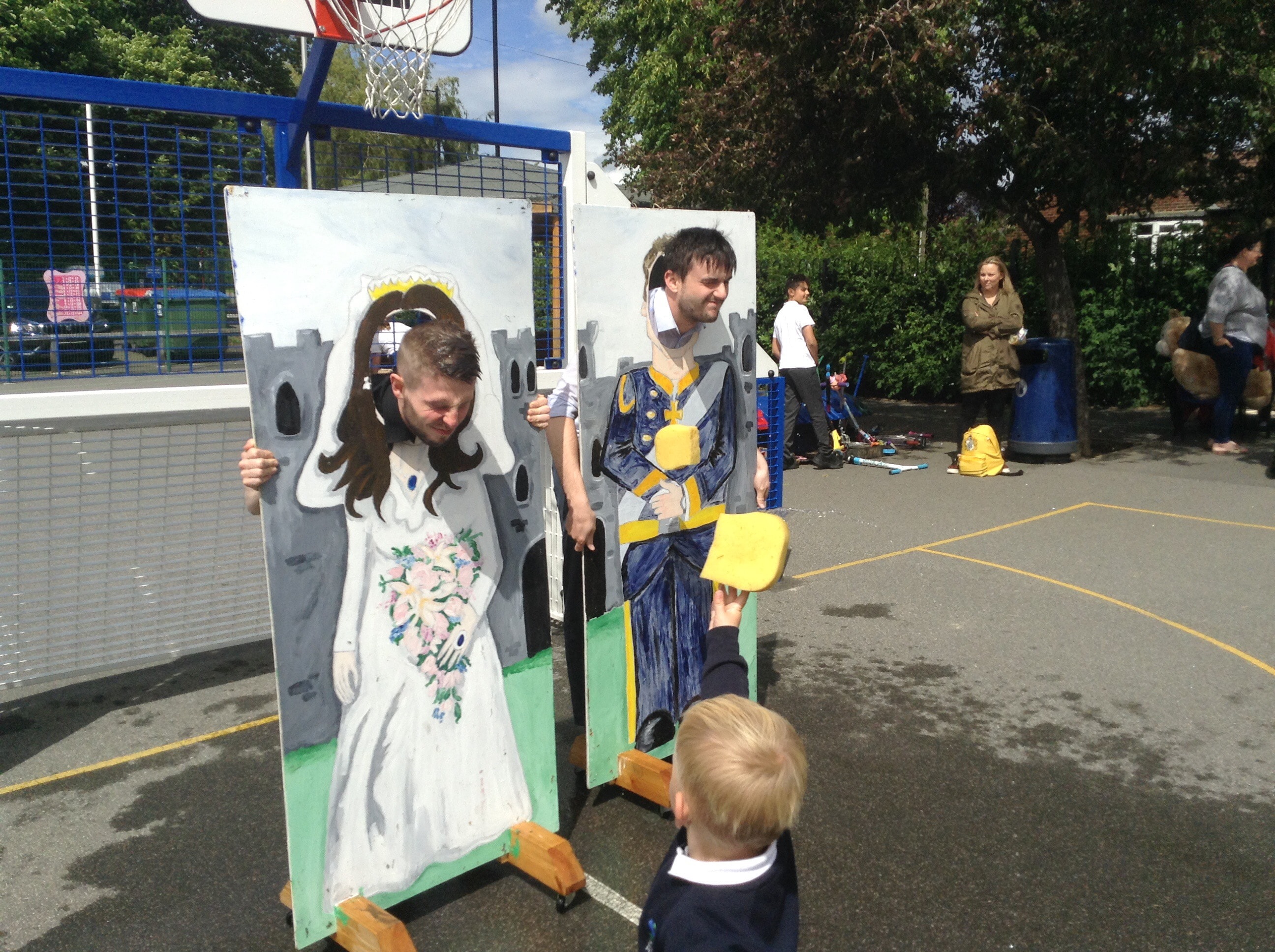Sports Morning and Beach Party
On Wednesday, we had a mini sports morning. The children competed in lots of different races e.g. egg and spoon, sack, running and a hoop obstacle.










We also had fun today at our Beach Party – so much fun that we forgot to take any pictures of the water fight! After the party we had our snack, played outside, danced to Wake Up Shake Up songs and went on the obstacle course.






100% Attendance
We would like to say a huge well done to the eleven Foundation 2 children who have achieved 100% attendance this year!


Golden assembly – outside!
We enjoyed an al fresco assembly today because the hall be being used. We sang and presented our certificates under the trees.
Scholes Open Gardens – scarecrow competition
We have been supporting the team of volunteers who orgainse Scholes in Bloom. Today is the Open Gardens event and we created some scarecrows in school around this year’s theme, ‘World of Song’. The scarecrows will be displayed again on Britain in Bloom judging day on 19 July.
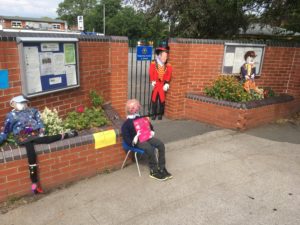
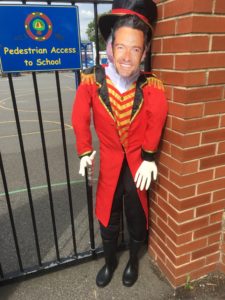
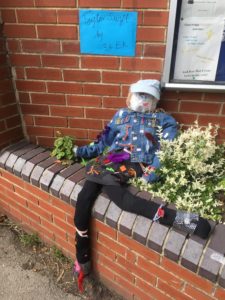
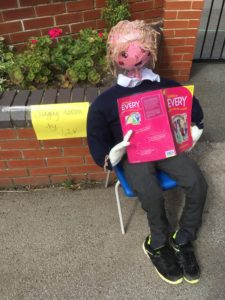
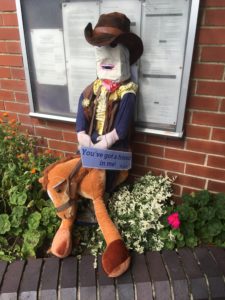
Whole school sports roundabout
Our whole school sports roundabout is a chance for all children to work together, in teams, showcasing their sporting skills. The mixed aged teams encourage children to work together, supporting and encouraging each other. Thank you to all the parents and carers who came to show their support.
Temple Newsam Farm
On Tuesday, we were very excited to finally be going on our first school trip. Luckily, the rain stopped and the sun was shining as we set off on the coach.


When we arrived at Temple Newsam Farm we split into two groups. The Rainbow children spent the morning on a Gruffalo Hunt whist the Sunshine children spent their morning on the farm. At lunch time we came back together and enjoyed a picnic on the field. Then we swapped over for the afternoon.


The Gruffalo Hunt
Before we went on a Gruffalo hunt we listened to the story. After, we went on our hunt and looked for signs of animals along the way. We discovered lots of clues that told us a variety of animals/minibeasts had been about. We found animal footprints, animal poo, we noticed that lots of leaves had been nibbled at, we found some trails in the long grass where animals had created a path and we also found lots of mole holes – which we enjoyed digging to find the tunnel entrance!







The Farm
On the farm we saw a variety of animals. Some of our favourites were the piglets, bulls and geese. Our farm tour guide told us that a female sheep is called a Ewe, a male sheep is called a Ram and a baby goat is called a Kid. We also looked at some old machinery that the horses used to pull along the fields before the vehicles became motorised. We also had a look in a Blacksmiths workshop.





The Park
We also enjoyed having some time on the play park. We took turns to go on the equipment. We also nipped down to see Andy (the beekeeper that came to visit us in school a few weeks ago). He wasn’t there but we managed to find the queen bee in the hive by looking for her green spot.



We would like to say a huge thank you to the parent volunteers who supported us on the trip. We hope you had a great day out!
Challenge – 3 bricks
Can your child tell you something that we did to make sure that they all stayed safe during the trip? e.g. they all wore hi-vis jackets, we split them into small groups with an adult, lots and lots of counting of the children.
Please email any quotes from your child. This will support us in our assessment by providing evidence towards the Health and Self-care strand of the EYFS.
Children talk about ways to keep safe.
Year 6 Enterprise
Year 6 would like to say a huge thank you to all the parents and carers, who attended their mini summer fair yesterday. Although the money is still to be counted, the event was a big success with plenty of smiles all round.
A busy week in Foundation 2
We’ve had a busy week in Foundation 2. The children wanted to change the Rainbow home corner and between them all they had lots of ideas. Such as a garden centre, a theatre, a circus or a cafe. To make it a fair process we had a vote. The children all had one vote each and the circus won.
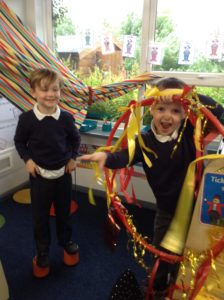
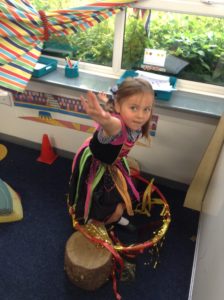
In the modelling area some children made Fathers Day cards. During circle time we shared ideas on why we love our dads, grandads, brothers or uncles. Below are a few examples of what the children said.
- “I love you because you are really handsome.”
- “I love you because you are kind and help me.”
- “I love you because you play with me.”
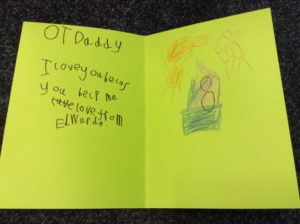
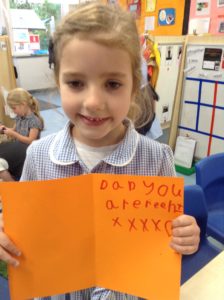
We looked at instructional writing. We read some instructions on how to make a jam or cucumber sandwich. They children carefully followed them to make their own sandwich. After, some children had a go at writing their own set of instructions.
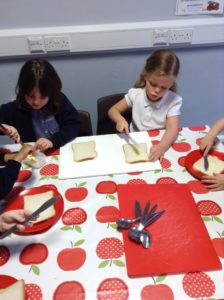
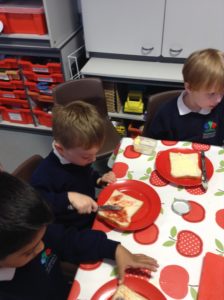
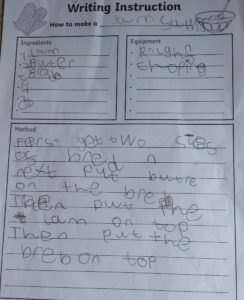
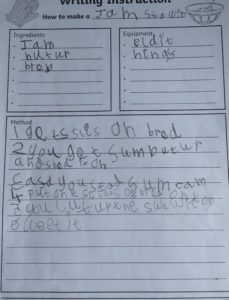
Finally, on Friday we made a womery. We read a non-fiction book which told us what we would need and we carefully followed the instructions to set it up. The children worked as a team to layer the soil, sand and compost into the tank. The children particularly enjoyed placing the worms into the wormery.
- “It’s slimy.”
- “It’s wiggling about.”
- “We need to put water in so the soil isn’t dry.”
- “The leaves make the worms grow bigger.”

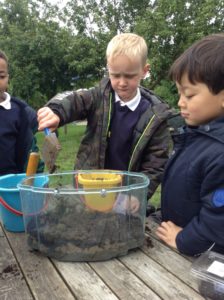
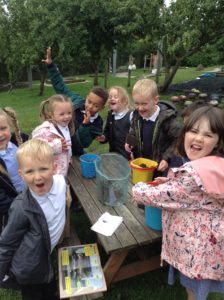
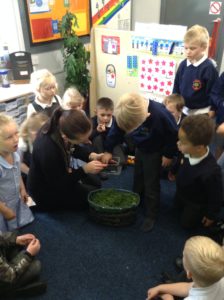

Challenge – 3 cubes
Please keep reading the word rocket words at home. These are a selection of tricky and high frequency words which will build your child’s confidence and fluency in reading.
We are really proud to see that lots of children have completed the word rockets and recognise the tricky and high frequency words by sight. Please now start to practise writing the rocket words.
Scholes Gala 2019 – WUSU, Pop Choir and Skipping Crew
Scholes Gala was a rather wet affair this year but our children still did us proud. The WUSU dancers strutted their stuff, Pop Choir sang their hearts out and the skippers jumped with smiles on their faces! Well done and thank you to everyone who came to show their support.






Bees
Over the last few weeks, the children have taken an interest in the bees that we have spotted in our outdoor area. On Friday, we invited Andy, a local bee keeper, to visit us. He brought an observational hive for us to look at and explained all about the Queen bee and how the bees make honey. We learnt lots of new facts about bees.
- Did you know that bees have 5 eyes?
- Did you know bees are important in the production of medicines and lots of cosmetic products?
- Did you know that the females bees do all the work?
At the end of Andy’s talk, he brought lots of bee suits for us to try on. It was great fun. Andy loves bees! He spends lots of his spare time looking after the bees at Temple Newsam where the Leeds Beekeeper’s Association is based. We really enjoyed meeting Andy and his bees and would like to thank him for visiting us. We hope that we will be able to see Andy and his bees again when we are on our trip at Temple Newsam Farm on the 18th June. Thank you, Andy!


